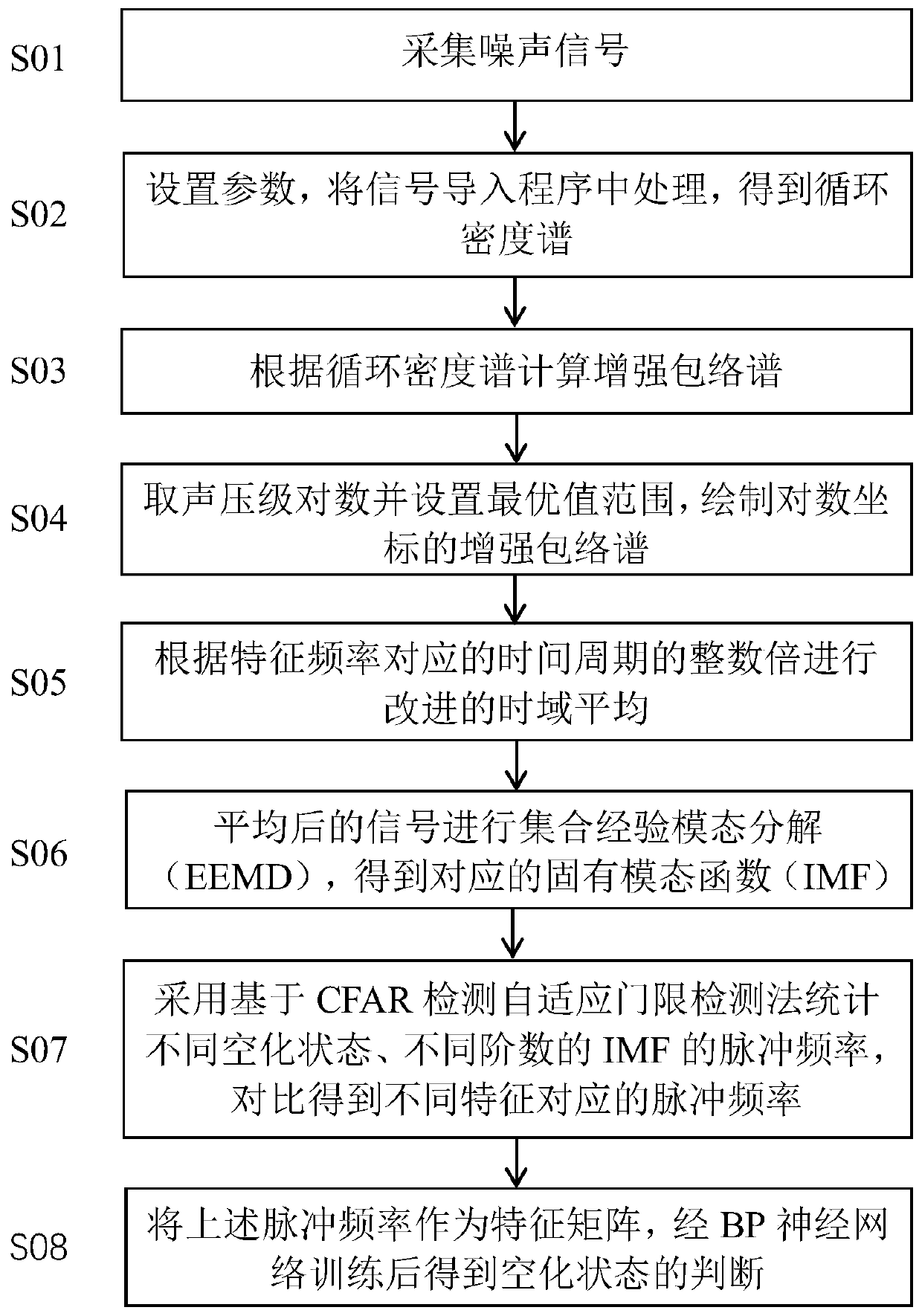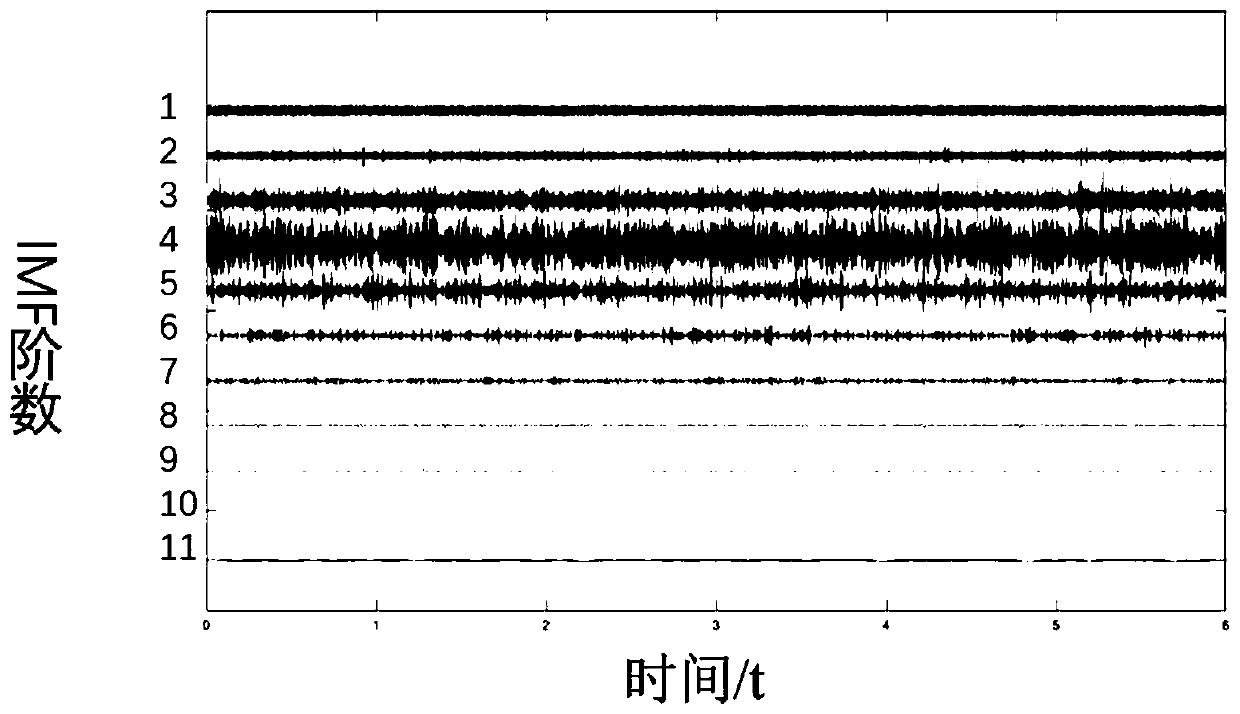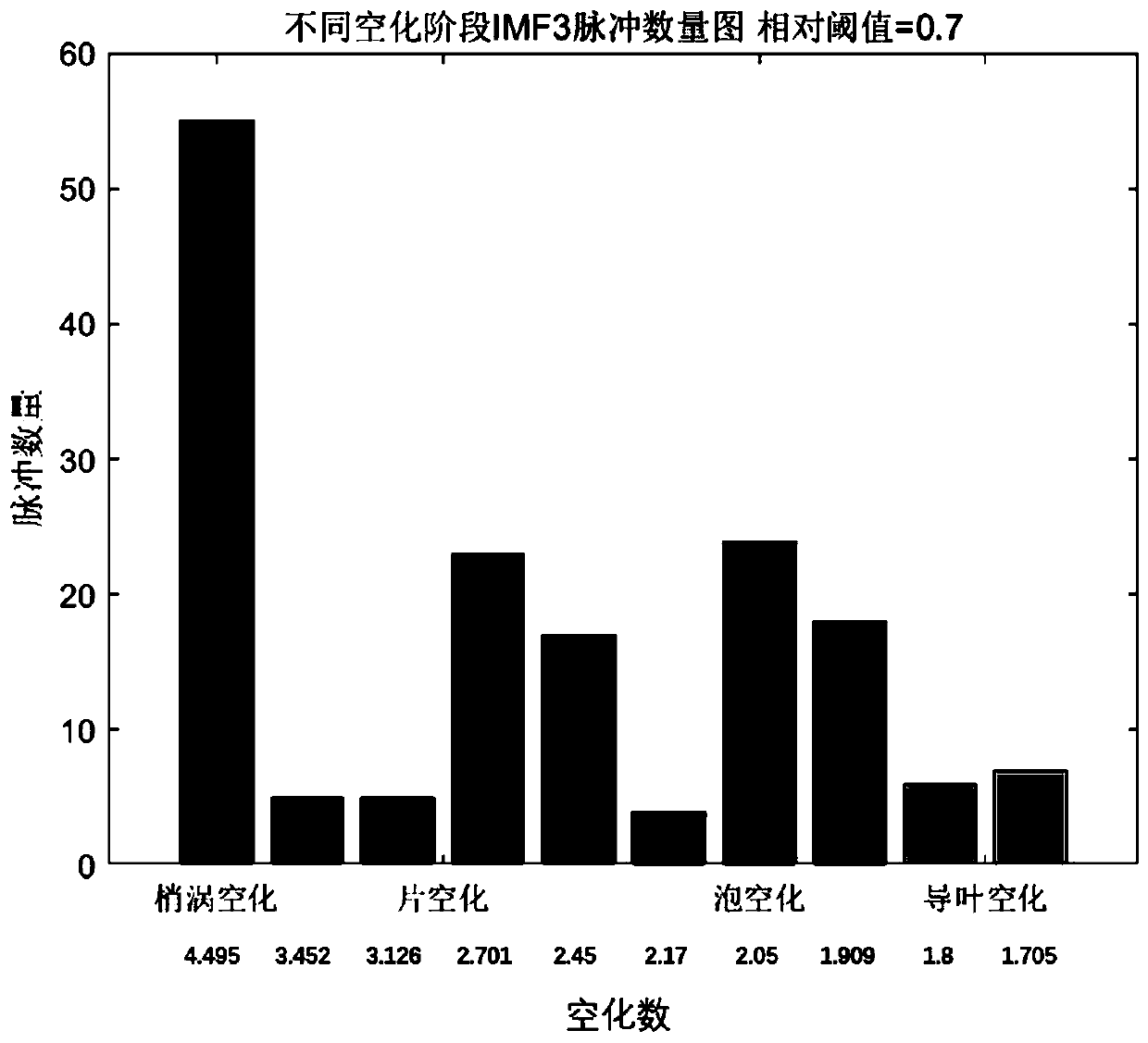Propeller cavitation degree identification method based on pulse frequency characteristic mode identification
A characteristic pattern, pulse frequency technology, applied in character and pattern recognition, pattern recognition in signals, rotating propellers and other directions, can solve problems such as unrealistic, unreasonable detection methods, and difficulty in detecting important features of rotating machinery, etc. Accurate estimation and solving the effect of low signal-to-noise ratio
- Summary
- Abstract
- Description
- Claims
- Application Information
AI Technical Summary
Problems solved by technology
Method used
Image
Examples
Embodiment Construction
[0073] The present invention will be further described in detail below with reference to the accompanying drawings and embodiments. It should be noted that the following embodiments are intended to facilitate the understanding of the present invention, but do not limit it in any way.
[0074] Such as figure 1 As shown, a propeller cavitation degree recognition method based on pulse frequency characteristic pattern recognition includes the following steps:
[0075] S01, using hydrophones to collect the noise of underwater propellers.
[0076] S02, set the corresponding parameters in the program, import the collected signal into the program, and calculate the cyclic density spectrum:
[0077]
[0078] Among them: α is the cycle frequency, f is the spectrum frequency; x is the signal to be tested; X is the spectrum of the signal x; X * Represents the conjugate complex number of X, and E is the mathematical expectation.
[0079] Among them, the mathematical expression of the...
PUM
 Login to View More
Login to View More Abstract
Description
Claims
Application Information
 Login to View More
Login to View More - R&D
- Intellectual Property
- Life Sciences
- Materials
- Tech Scout
- Unparalleled Data Quality
- Higher Quality Content
- 60% Fewer Hallucinations
Browse by: Latest US Patents, China's latest patents, Technical Efficacy Thesaurus, Application Domain, Technology Topic, Popular Technical Reports.
© 2025 PatSnap. All rights reserved.Legal|Privacy policy|Modern Slavery Act Transparency Statement|Sitemap|About US| Contact US: help@patsnap.com



